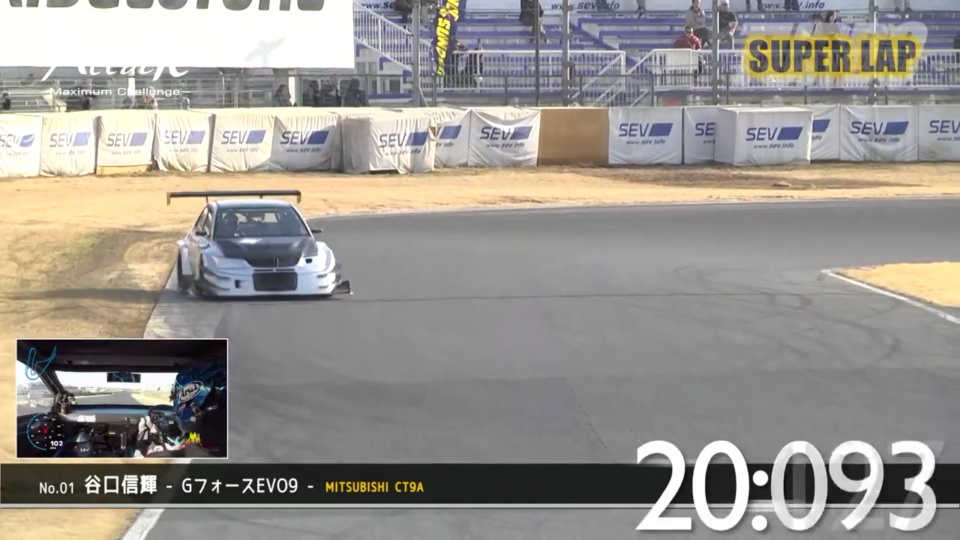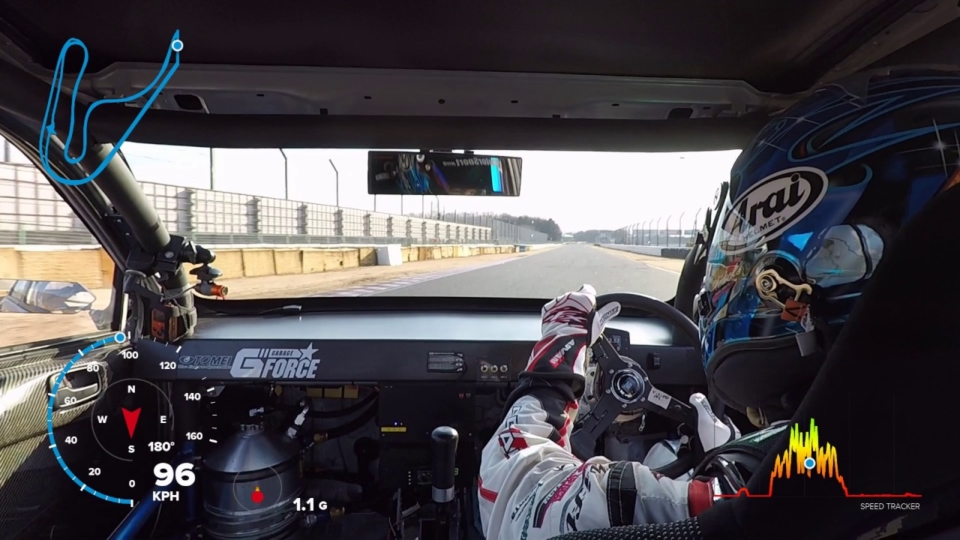Combine the silky-smooth driving of Nobuteru Taniguchi and the outrageous performance of the G-Force Evo IX, and 52-second laps at Tsukuba are possible. With 295-section Yokohama Advan A050 tires, there’s plenty of mechanical grip through the course’s numerous hairpins, big wings for high-speed grip, and, of course, a ludicrously powerful 4G63 under the hood. Yet, despite all the neck-breaking performance and the violent power delivery, the lanky JGTC driver’s relaxed style makes it look easy.
At higher speeds, the Evo is thrust into the road thanks to a Voltex carbon widebody kit, complete with vented rear fender flares to release pressure and gain top speed, two-step sideskirts to smoothen the flow of air around the Evo’s flanks, and a shelf of a front splitter to plant the front end. Even with all the wild additions jutting off the Evo, those distinctive angles and the stout frame have been retained; it’s still a recognizable production car.
However, it’s almost completely custom underneath the skin. Tailor-made Ohlins DFV dampers control body movement, and the super-stiff Hyperco springs keep the aero platform stable so those wings can work properly. With more traction than some single-seaters, the car pulls 3.0-g in some sections, if the onboard G-meter is accurate. Either way, the stick is enough to take advantage of the nuclear reactor under the Voltex carbon hood.
It’s the motor which almost steals the spotlight from the sci-fi bodywork. A 2.3-liter Tomei stroker kit broadens the powerband slightly, but Tomei 272-degree cams suggest the emphasis was on keeping everything flowing nicely around the 7,500-rpm redline. The hefty Borg Warner EFR 8374 turbocharger comes on with a few blinks of lag and a real kick-to-the-kidneys delivery, so it’s hardly the most tractable powerplant. Yet, Taniguchi’s technique gets the most from it.
His drift-inspired clutch kicking in the slower hairpins helped that big turbocharger spool so the all-wheel drive system can make good use of the 730 horsepower and catapult out of the corner with minimal wheelspin. With 565 lb-ft of torque available at 4,700 rpm, it’s surprising that the car doesn’t spend much time going sideways.
The onboard shots reveal just how violent the mid-range surge is. Even as Taniguchi gently steers the Nardi wheel and pulls the Holinger sequential’s shift lever without hurry, small corrections are apparent in almost every corner. Even though Taniguchi is clearly balancing the car with gentle inputs, the Evo has been set up with a positive front end and borders on oversteer much of the time. This characteristic is most noticeable when the Evo breaks sideways at a little over ninety miles an hour (0:48 in the onboard footage). Taniguchi, unflappable as anyone, doesn’t lift. He simply countersteers and pins his foot to the floor. Chalk that up to a balanced car and a driver with a lot of experience going sideways.
He’s disciplined and gentle with the inputs, but the vehicle dancing at the limit says it all. The commitment is clear—and his celebratory fist pump after that blistering lap conveys all the emotion that can’t be read from a face concealed by a helmet.





















